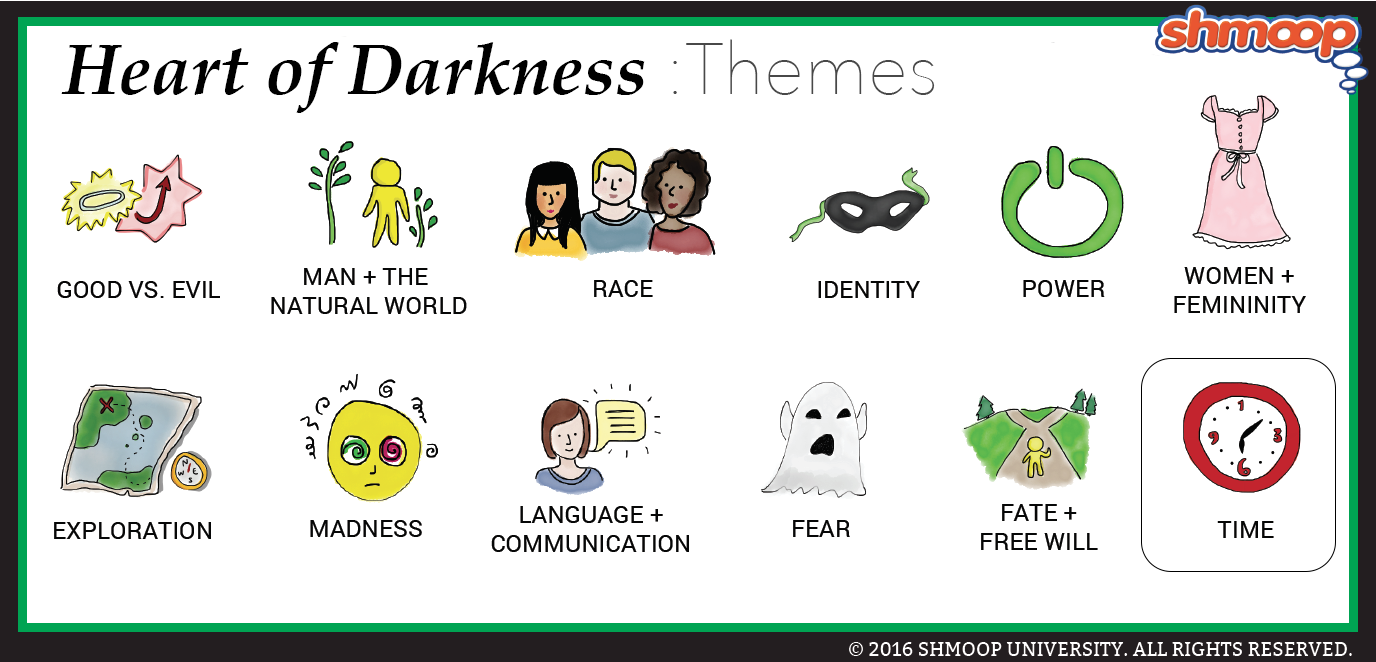 (Click the themes infographic to download.)
(Click the themes infographic to download.)
Conrad plays with readers’ sense of time to emphasize certain points in the plot of Heart of Darkness. Marlow tells his story aboard the Nellie so readers go with him (as well as his listeners) into the past. Simultaneously, we readers in real time watch the reactions of Marlow’s listeners as they respond to Marlow’s story. Marlow’s journey into the interior is also described as a journey back in time, to a prehistoric age during which the untouched wilderness proves primal and merciless. The river itself comes to represent the linear flow of time, on which Marlow travels forwards and backwards.
Questions About Time
- How does Conrad maintain the aura of suspense in the first two chapters of the novel? What techniques does he use to prolong time?
- How do the numerous delays in Marlow’s journey affect the pacing of the story?
- How does Conrad make the last part of the journey (to the Inner Station) seem timeless? Why does Marlow feel like he is going backwards in time?
- How do the two separate time sequences (that of Marlow’s journey and that of Marlow’s telling the story to his fellow passengers) complement each other? In other words, when Marlow interrupts his narrative, how does that interruption emphasize, parallel, or render ironic the action in the narrative?
Chew on This
Conrad uses well-placed delays in Marlow’s journey, long descriptive passages, and incompetent members of the Company to prolong time and induce a suspenseful atmosphere.
The river is a symbol of linear time that Marlow and his crew traverse; as they go further and further up the river, they feel as if they are receding further back in time.